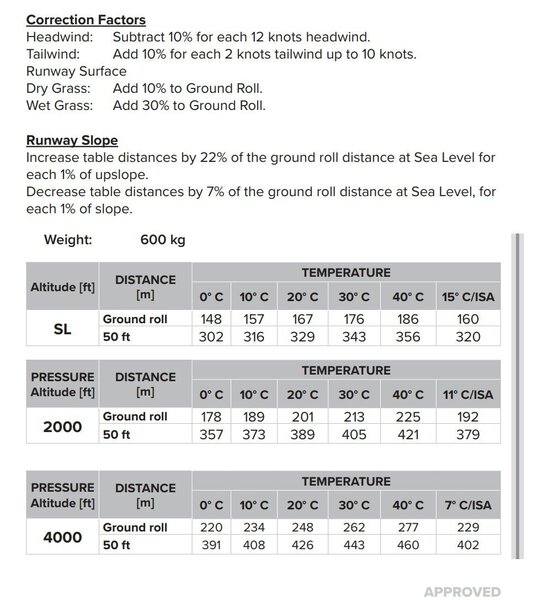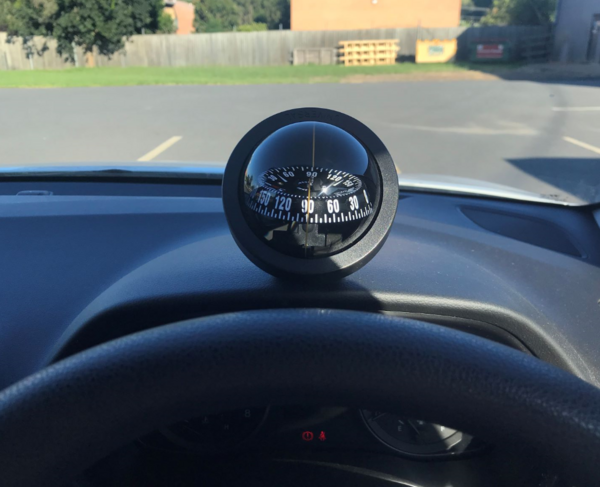-
Posts
1,414 -
Joined
-
Last visited
-
Days Won
5
Content Type
Profiles
Forums
Gallery
Downloads
Blogs
Events
Store
Aircraft
Resources
Tutorials
Articles
Classifieds
Movies
Books
Community Map
Quizzes
Videos Directory
Posts posted by APenNameAndThatA
-
-
On 22/01/2021 at 12:53 PM, FlyBoy1960 said:
My question was not about ground roll. My question was about MTOW. My question was if one should reduce the MTOW for air that is much less dense than usual. The obvious answer would be, "No, otherwise it would be in the POH, DUH!" But because my plane does not fly well at around MTOW, and planes can take off at 40 degrees C, and this is a forum for chatting, I thought I would ask the question.
-
On 22/01/2021 at 9:08 AM, FlyBoy1960 said:
for a start, you can fly over the aircraft maximum takeoff weight. It is there for a reason ! DUH
secondly, there should be graphs in the POH which show you the different calculations for density altitude and from this you can calculate your ground roll for temperatures above standard atmosphere and the climb rate to be expected.
LSA's have no such graphs. Apparently the reason is that LSA's tend to have such short ground rolls.
-
2 hours ago, naremman said:
To me, aerobatic flying represents the apex of my flying experiences, but I probably don't represent the norm of the average pilot. The percentage that of pilots that happily engage indulging inverted flight leaves us in a small minority, which establishes its own balance.
My introduction to aerobatic flight, nearly 50 years ago, occurred at our local aero club's Xmas function, just after I had gone solo in a venerable C172. We had a great "gatekeeper" as a member, as welcoming and inclusive as you can get, who invited me for a fly in his Victa Airtourer. Arthur had a well established reputation for his aerobatic skills, but I still accepted the invitation. We launched off in the Airtourer and I had a leisurely 20 minute introduction to the Airtourer, being quite taken with it crisp handling after the Cessna experience. We steadily gained some altitude and from the left seat came: "I reckon I can teach you an aileron roll in two minutes"!! One quick briefing, one demonstrated roll, next one following through with fingers on the spade handle followed by the next one being mine. 120 seconds had not elapsed. What a positive experience. As gentle as, no stress or discomfort and I had a huge smile on my face. I ended up buying that Airtourer 16 months later when Arthur sold it to buy another Airtourer. The only sour note came from my flying instructor who was far from enamoured of his student being so happy with the experience.
Once I had about 40 hours on the Airtourer I explored what options were available for gaining an aerobatic rating. My good fortune was that John Douglas, the then CFI of the Royal Aero Club of WA, who learnt to fly on Airtourers in NZ was happy to instruct me. John used to bring his lunch along and devour it while we were ascending to 4000'. We would engage in about 30 minutes of instruction, and once the lesson was concluded it was John's aircraft as we aerobatted vigorously to 1500'. What an experience to observe your aircraft seemlessly flowing from one manoeuvre to the next, with the controls just being caressed by an instructor of the highest order. My memory winces when I recall that in 1975 dollars I parted with $35 for John's instruction. No better value have I ever received.
"Go back home and just enjoy you rating" intoned John, followed by firm advice to respect the 3000' insurance policy. And that's what I did for the next 11 years, as well as flying some aeros in a Chippie, Tiger Moth, Fuji and Beagle Pup.
I got conned by a fellow Airtourer mate to attend, as a visitor, a monthly Aerobatic comp. at RACWA in 1986. Nett result was both of us in his 115 Airtourer, with me looking at the sequence on the climb up and trying to commit it to memory. To the surprise of all, probably more so to me, I got a placing, and heaps of encouragement to continue. I gained a lot of satisfaction from that flying, but it certainly differed from leisure aerobatics. Taking a 100 Airtourer into competitions is a bit like tackling Bathurst in a Cooper S!
Whilst my experience has been very positive, I am also mindful of the many pitfalls that have arisen with aerobatic flight. There are way too many variables that can detract from the experience. If your instincts don't feel right, get to clear air or safe and firm ground.
There is also a risk factor, which should not be understated. Safety is no accident. The two pilots I know who have died came from avoidable incidents.
When I make my last log book entry I know it contains the record of many hours happily aerobatting.
Aerobatic incidents?
-
On 22/01/2021 at 11:43 AM, Garfly said:
What I like about this particular compass is that if you can mount it in the cockpit such that you have a view down on the disc (not so easy to do) the headings show in the correct sense - like a DG. So, in this case, if you want to turn 30 degrees right you just turn towards 120.
The normal whiskey compass (like the rim display of this one) is, and always has been, counter-intuitive; to get to that number you need to turn in the opposite direction (oh yeah, and wait a while ... because the damn thing's going to feint the right way first. )
By the way, what is the confusion of which you speak Mr Pen Name? 😉
The numbers move in the wrong direction, just like you said. So, if I turn right, the numbers start moving from the left. What was interesting was that it was hard to work out *why* it seemed to be wrong. I suppose I thought that if I am turning right, that is where the numbers should appear from, the right. Also, bigger numbers should be to the right of littler numbers.
I navigate with the compass rose on the Dynon, and the pedestal. compass was a late addition after the AHARS (? spelling) died and I was without any compass for a while.
I also thought that I would be able to see at my leisure about nippy north and sluggish south. I have sort of observed it.
Because cars have much more linear acceleration, I can easily see, for example, the numbers climbing if I am heading west and speed up (and vice versa x 2).
If I can read it at a glance, and it does what I expect it to do, it will be less cognitive load flying.
-
37 minutes ago, Jerry_Atrick said:
I have to admit, my first thoughts were, "why?", so would be interested in your thoughts...
If there is a legal obligation that is not being fulfilled and there is no reasonable way to see it being fulfilled, then, the question would be "why not?"
Before one can asnwer either question, the natural question to ask is, what was th elawyer instructed to do?
But, lets assume it was to seek specific performance to hand over the log book and training records, I can't see an issue with that - will no other school touch @New2flying as a result?
I have no idea how much lawyers charge, but I am guessing it is about $250/hr up... so on a practical level, if it is going to cost you $1,000 to recoup $500 worth of training, it may be worth just moving on. However, most letters written by lawyers will demand their fee be paid as well (assuming the lawyer believed their client had a case and exhausted reasonable avenues to obtain their outcome).
One would hope the lawyer would act in their client's best interest and advise appropriate action to obtain their records without unduw personal reputatrional or financial damage..
Back to the question - what was the lawyer instructed to do?
It doesn’t need to be this complicated. She said she would send it to a CFI, so get a CFI to request it.
-
2 hours ago, New2flying said:
I followed this advice. She said that she would only give it to another CFI, which I found ridiculous. I instructed a lawyer.
Don’t do that. Just get her to send it to a CFI. Also, no one cares what *you* find ridiculous. Find out if there are any regulations. If you can’t find any, ask CASA.
-
I'm *not* an expert on this. Can a cracked piston or ring problems cause the oil to be burnt, or vice versa? If not, they why test that particular cylinder. I would have thought that ring problems would have actually decreased the risk of oil being burnt because of inefficient combustion.
-
40 minutes ago, kasper said:
And if you are an ultralight a transponder fit takes your airframe out of self install and maintenance of another system that must them be installed and maintained by a LAME .... this is really starting to look like the end of ultralights in any form where the owner maintains an airframe that can actually be used for recreation.
I am NOT an expert on this. I thought that there were portable transponders you could stick on your window or put on a wing tip? Like SkyEcho on the OzRunways website.
-
 1
1
-
-
-
-
10 hours ago, RossK said:
So a non current pilot departs with no charts, no EFB, no weather information, no flight plan lodged.
Purposely decends into IMC (not IFR tained either) and flys into the ground.
And it's ATC fault?
ATC is supposed to make travel as safe as possible, even for pilots who do the wrong thing. That’s how come a finding was against ACT even though the pilot was wrong. This way of looking at things is at the heart of aviation safety.
Also, saying it was determined to be ATC’s fault is a straw man.
Also, the point you made would have been understood by the people doing the report. They get it, don’t worry.
-
 2
2
-
-
4 hours ago, Garfly said:
See if this helps: robinsm was pointing out that in human affairs there are commonly two sides to a dispute and that one side ain't always the most reliable advocate of the other side's position.
Simpler to get than lift theory, if you ask me.
Got it
-
5 hours ago, robinsm said:
the point of the post
I'm still not getting it.
-
8 hours ago, robinsm said:
Has anyone actually contacted the school involved for their input...for their side of the incident..
I can’t believe this got three upvotes. The school already gave their side of the story to the OP, and the school is hardly going to comment to a third party about OP. Maybe the comment was to the effect that there would have been two sides to the story or something. Feel free to explain what I am missing.
-
17 hours ago, Yenn said:
So what is the greatest magnetic variation on the trip? It would have to be greater than 60 degrees. I think Oz Runways are trying to pull the wool over your eyes. It is what they call a red herring.
Magnetic variation is 30 degrees west for a fair bit of the trip. So, say, they took magnetic variation from halfway along the route, 303° would be correct.
-
11 hours ago, Kyle Communications said:
Your pitot is telling you lies. If you are at full throttle on climb doing 30kts indicated ...the AOA would be very steep and you would be like a helicopter on its way down not going up
I’m not saying its not saying lies. It’s still weird. The plane shudders a bit, as if, maybe, part of the wing is stalled.
-
Doesn’t sound like you were too nervous or lacked commitment. Don’t quit.
-
11 hours ago, FlyBoy1960 said:
Some people should never fly, just enjoy going for rides with people and life the dream from the other seat !
WTF?
-
43 minutes ago, Kyle Communications said:
Stall of 27kts at 450kg not 600kg. The savannah can stall at 27 kts too...at 450kg but 30 kts at 600kg with full flap
Seems the same as a Foxbat, at idle. At about 575 kg, at full throttle, at 30 kt indicated, the Foxbat climbs at 400 fpm.
-
4 hours ago, RFguy said:
No, the quantity of momentum does not change.
the forces acting on the plane are unchanged because gravity is directly below us.
so for these purposes, momentum can be a scalar.
yes- in real life there will be force required to make that change but I specifically said that was not going to be taken into account.
Momentum is a vector. Otherwise, two blocks running into each other on a frictionless plane would have the same momentum after the crash regardless of the directions they were going before the crash.
-
5 hours ago, RFguy said:
(my reference is the ground)
"making a 180 degree turn within our parcel (all else being equal) has no effect on the airspeed - and thus, the approach of the stall speed - whatsoever."
I disagree. Let me provide an example :
1) The aircraft is travelling at 100 K over the ground headed south
2) and there is a 50 K headwind from the south
3) therefore IAS is 150 K. yes, agree ?
now, the aircraft 'instantly' turns left 90 degrees (and we assume the turn does not cost any energy)
4) the ground speed is still 100 K (momentum was conserved )
5) the headwind is now ZERO because the wind is now off the wing .
6) Now ground speed = airspeed = 100K. We lost 50 K of airspeed by turning.
4) is wrong. Ground speed increases.
-
6 hours ago, RFguy said:
yes we are flying within a parcel of air sure, but my point is (without a shear etc) the airplane does not go instantaneously from a headwind to a tailwind . turning the aircraft takes time, and as long as you know your airspeed often enough (by looking at the ASI or feeling it through your hair) , you wont be caught out. if you are S&L 10 kts about the stall with a 30 kt headwind, and turn 180 "instantly" and are flying S&L then now you are 20kts below the stall speed. But it wont happen that way on a 30 deg AOB turn at base/final speeds of rec aircraft.
and yes, I agree the wing is relatively unloaded in a moderate speed steep descending < 30 deg turn. Not much required of the wing... very different to the high AoA / flow separation stall condition. wing will be at low AoA for high flying descent rates.
No. If you are straight and level into a 30 kt headwind and are 10 kt above stall, and you turn instantly 180 degrees, you are 10 kt above stall
-
1 hour ago, onetrack said:
What are you driving that has the fuel capacity and reserve for 6185Nm?? A B777??
Aeroprakt A22LS Foxbat. It has long range tanks.
-
 2
2
-
-
1 hour ago, Jase T said:
I would hopeif you were planing that flight (at least for the over water sections) you will be using a NAV system somewhat better than an iPad with OzRunways.........
Just follow the grey line!





LSA's have a MTOW of 600 kg. My plane flys badly if that weight is exceeded. Can a "virtual weight" be calculated from deviation from standard atmosphere?
in Student Pilot & Further Learning
Posted
I was not suggesting that anyone fly overweight. My question was if, in particular conditions, the MTOW should be revised. And Foxbats don't have laminar flow wings. And if CASA does allow you to fly overweight then, actually, you can do it and it is a legitimate thing to discuss. Except that was not what I was asking about. And, the same airframe of floats has a MTOW of 650 kg. And, no I'm not advocating flying overweight.